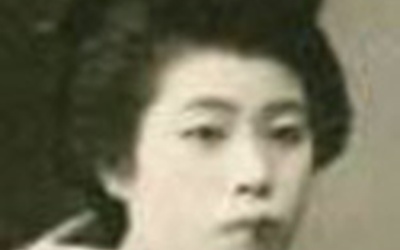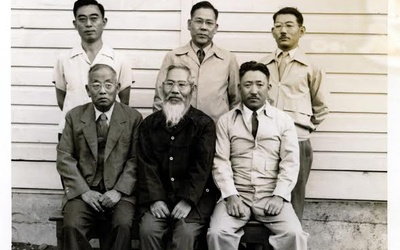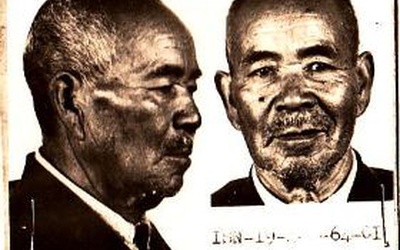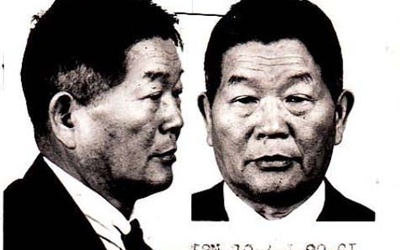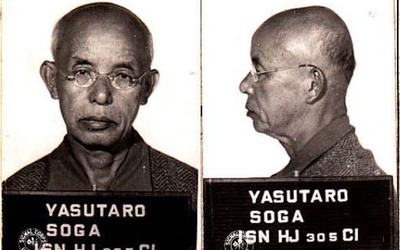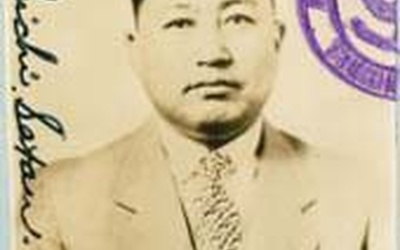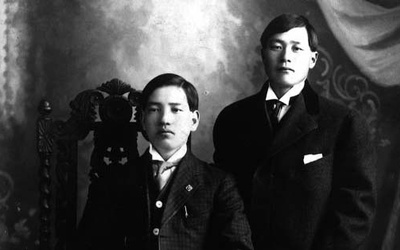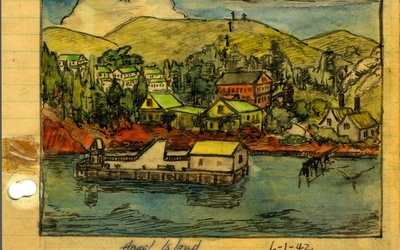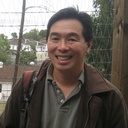
Grant Din
@grantdinGrant Din is community relations director at the Angel Island Immigration Station Foundation, where his work includes coordination and creation of content for AIISF’s Immigrant Voices website and research into the World War II experiences of internees of Japanese descent on the island. Din has worked in nonprofits in the Asian American community for thirty years and serves on the boards of Mu Films and the Marcus Foster Education Fund. An avid genealogist, he enjoys working with friends to help others explore their Asian American roots. Din has a B.A. in sociology from Yale University and an M.A. in public policy analysis from Claremont Graduate University and lives with his family in Oakland.
Updated February 2015
Stories from This Author
The Angel Island Story of Kane Mineta, Norman Mineta’s mother
April 13, 2018 • Grant Din
Americans know Norman Mineta as the first Asian American in a presidential cabinet, when he was secretary of commerce under President Bill Clinton, secretary of transportation under George Bush, where he took decisive action after the attacks of 9/11, and as a U.S. Congressman, councilman, and mayor of San Jose. He also received an Immigrant Heritage Award from the Angel Island Immigration Station Foundation (AIISF) in 2015. What they may not know is that his roots go through Angel Island, …
The Shigenaga Brothers’ Detention on Angel Island and the Continent During World War II
Nov. 10, 2015 • Grant Din
Kakuro’s life in Hawai`i and arrest Kakuro Shigenaga was born in the Hibagun district of Hiroshima-ken on August 30, 1896, came to Hawai`i in February of 1913, and settled on Maui. He was a salesman at the Kobayashi General Store in Kahului, Maui and married to Yoshie. They had four children. Kakuro was arrested on January 7, 1942, one month after Pearl Harbor was attacked, because his diary was found during a search of his brother Shigeo’s house, and the …
Nentaro Ide's Detention at the Age of 75
Sept. 10, 2015 • Grant Din
Nentaro (also known as Toshitaro or Mantaro) Ide was born in Fukuoka, Japan on October 13, 1867, and according to his internment file, arrived in Hawaii in 1901, where he worked on a dairy farm and lived until 1906, then left for Seattle, where he briefly lived. He then moved to San Francisco and then Concord in 1909. He was foreman of the Shadelands Ranch, owned by the Penniman family, and also started a hotel and grocery store. Sheila Rogstad, …
Rev. Asataro Yamada's Detention on Angel Island Due to His Religious Practices
May 29, 2015 • Grant Din
Born in Aki-gun, Japan in 1878, Asataro Yamada first came to the United States in 1898 into the port of Seattle at a time when there were few restrictions on Japanese immigration. He then worked as a sailor for many years on ships that sailed all over the Pacific. He worked as a farm laborer, ran his own hardware store in Seattle, sold Chevrolet cars, and taught people from Japan how to drive, according to his grandson Byron Ishiwata. He …
Journalist Yasutaro Soga’s Detention on Angel Island During World War II
May 14, 2015 • Grant Din
Japanese immigrants were arrested by the FBI on both the mainland U.S. and the islands of the Territory of Hawaii on December 7, 1941 and in the following months. By law they were “enemy aliens” and could be taken away as internees. As mentioned elsewhere on our site, Asians could not become U.S. citizens, by law. One of these immigrants was Yasutaro Soga, editor of a Japanese language newspaper in Honolulu. He and several hundred other prominent Issei (Japanese immigrants) …
Chokichi Satow – “Double Angel” Detained on Angel Island at Least Twice
May 5, 2015 • Grant Din
Satow was born in Miyagi-ken, Japan on January 15, 1885. He first arrived in San Francisco in 1903, before Angel Island became a U.S. immigration center, later returned to Japan, and then re-entered the U.S. in 1928 and 1931, when he was questioned on Angel Island. As a returning immigrant who had originally arrived before the restrictions of the 1917 and 1924 immigration laws took effect, he was allowed to return to the U.S. Satow worked many jobs to make …
Angel Island Was One of Eight Detention Centers for Otokichi Ozaki
April 27, 2015 • Grant Din
Ozaki was born November 3, 1904 in Kochi-ken, Japan, and came to Hawaiˋi on April 24, 1917. Otokichi married Hawaiˋi-born Hideko Ozaki, and they had four children aged two to eight when World War II broke out. He was one of several hundred Japanese immigrants in the Territory of Hawaiˋi to be arrested, and then was sent to eight different internment camps. His book captures his and his family’s experiences through letters, poetry, and later radio broadcasts that he gave …
Mantsuchi and Sojuro Nakamura: Japanese Immigrant Farmers in California’s Central Valley
April 15, 2015 • Grant Din
Mantsuchi Nakamura was born on February 27, 1877 in Hiroamachi, a small village in Yamaguchi-ken on the isolated Yanai Peninsula of western Honshu, during the time of the Meiji emperor. He was the eldest of seven children. His granddaughter-in-law, Katherine Peters Yamada, notes that many of the people in this region were quite poor in the late 1800s. Despite its isolated location, 420 men from Yamaguchi-ken responded to contractors from the Hawaiian government who were recruiting Japanese laborers for the …
The Hoshidas’ Journeys Through Angel Island during World War II
April 6, 2015 • Grant Din
George Yoshio Hoshida was arrested and detained on February 6, 1942. Information in his file at the National Archives and Records Administration in College Park, MD notes that he was a member of the Kilauea Central Japanese Association, United Young Buddhist Association (YBA), and the Waiakea Houselots Association. A confidential informant noted that believed Hoshida was “pro-Japanese” because he was a treasurer for the Hawaii Budo Kyo Kai, a judo association and due to his involvement with the YBA. In …
George Hishida – A Life in Photography Interrupted by World War II
March 26, 2015 • Grant Din
George Mioya Hishida was born in Fukushima, Japan, in 1896 to a Christian missionary father who was absent from the family for long periods of time. He had two brothers and two sisters, and after graduating high school in 1913, he immigrated through Seattle and then went to Los Angeles to join his oldest brother. The brothers then worked in Salt Lake City, Utah, where his brother worked on the railroad and George worked as a sugar beet contractor and …

